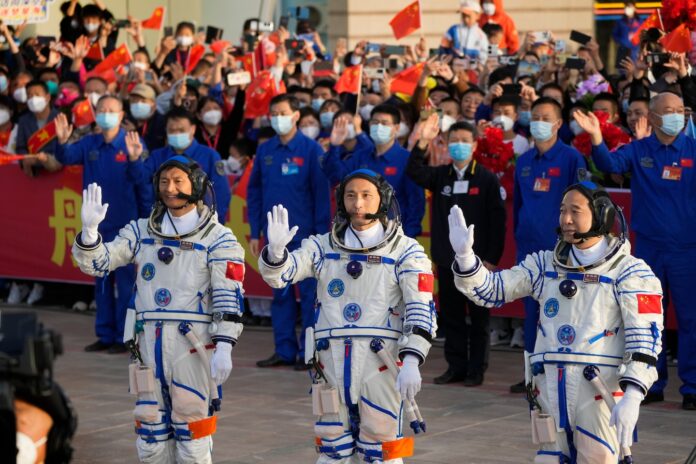China made its ambitions for expanding the country’s presence in space clear on Monday, when Lin Xiqiang, deputy director of the China Manned Space Agency, set a 2030 time frame for doing the same and laid out plans for scientific and technical research there, officially confirming that a previous timeline of landing astronauts on the moon after 2030 had been brought forward.
“The overall goals are to realize China’s first manned landing on the moon before 2030, carry out scientific exploration and related technology demonstrations on the lunar surface, develop a commuting system and short-term stay system for crews, and develop human-robot integrated testing and other key technologies,” Lin said at a news conference at the Jiuquan Satellite Launch Center in northwestern China on Monday.
“Our astronauts will walk on the moon, collect samples around the landing site and perform some in situ research. This will lead off our manned missions from low Earth orbit to deep space and help deepen mankind’s knowledge about the origin and evolution of the moon and the solar system,” he said, according to state media reports from the news conference.
China’s Shenzhou-16 spacecraft, propelled by a Long March 2F carrier rocket, launched at 9:31 a.m. local time on Tuesday morning and is transporting three Chinese astronauts from the Jiuquan center in the Gobi Desert to the Tiangong space station.
This marks the first time a Chinese civilian has gone into space. In addition to two members of the People’s Liberation Army’s Astronaut Division, the space craft will carry Gui Haichao, a professor at Beihang University’s School of Astronautics’ Department of Spacecraft and Launch Vehicle Technology in Beijing.
The five-month mission is the first to the Chinese space station since it became fully operational late last year. Its expected 15 years in orbit mean that the station could become the sole permanent research facility after the International Space Station is decommissioned in 2030.
China has big ambitions in space. It has landed a rover on Mars and a robotic spacecraft on the far side of the moon, and operates a space station in low Earth orbit.
Rapidly gaining on the United States in space has become an important source of nationalist pride in Chinese technical prowess for President Xi Jinping, who has called “exploring the vast cosmos” an “eternal dream” of the Chinese people. A propaganda banner beneath the launchpad on Tuesday urged China to be “self-reliant” in space.
The Chinese program has long prioritized lunar exploration. In 2021 China and Russia announced a joint plan to build a research station on the moon, with work on the base near the moon’s south pole slated to begin in the mid 2030s.
Experiments with robotic 3D printing are expected to take place in late 2020s as Beijing works out how to build a permanent structure on the moon’s surface.
Nelson, the NASA administrator, has warned that China will be “a very aggressive competitor” in space. “It’s the position of NASA and, I believe, the United States government that we want to be first back on the moon. … And we are getting geared up to go,” he said at the end of 2021 when announcing a delay in the moon landing mission.
The United States has also been working to establish norms of behavior that would govern activities in space and on the moon by having allied nations sign an agreement known as the Artemis Accords.
After a brief period of being willing to work with China on space in the 1980s and 1990s, the United States grew wary of Chinese intentions. It cut off engagement in 2011 after Congress passed a law banning NASA funding direct work with China, a move that effectively barred Beijing from the International Space Station.



